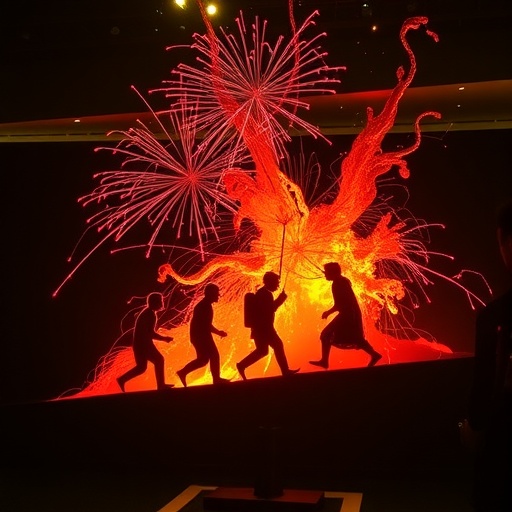In contemporary society, aging is often sidelined—an inconvenient reality that we tend to ignore or actively resist. The cultural landscape is dominated by youthfulness, with trends, styles, and consumer campaigns overwhelmingly targeting younger demographics. Concurrently, the anti-aging industry has burgeoned into a multibillion-dollar enterprise fueled by products and procedures promising to halt or reverse the visible and physiological markers of growing old. Yet, aging remains an inescapable biological process intricately woven into the human experience.
Our species is now living longer than ever before, a phenomenon supported by advancements in medicine, nutrition, and public health infrastructure. This demographic shift towards older populations is particularly pronounced against the backdrop of global fertility rates falling below replacement levels in many countries. The resulting phenomenon, often termed the “global graying,” poses profound challenges to economic systems, labor markets, and healthcare provision, forcing societies worldwide to reevaluate their relationship with aging.
Michael Gurven, an anthropology professor at UC Santa Barbara, offers a groundbreaking perspective on this issue in his forthcoming book, Seven Decades: How We Evolved to Live Longer (Princeton University Press, 2025). Drawing from an evolutionary framework, Gurven contends that humans are biologically equipped to live to at least seven decades, a lifespan that is not just a modern artifact but deeply embedded in our species’ evolutionary blueprint. His work bridges physiological factors and social constructs that influence longevity, providing a holistic understanding of what it means to age.
One of the key insights Gurven shares is that the extraordinary gains in human life expectancy during the last century have not drastically extended the upper limits of how long humans can live. Instead, these improvements have primarily increased the likelihood that people survive to old age in the first place. Unlike many species that perish shortly after their reproductive years, humans have evolved to live long past menopause. This post-reproductive survival is rare in the animal kingdom and is thought to have emerged thousands of years ago among our hunter-gatherer ancestors.
By examining hunter-gatherer and forager-farmer societies, Gurven’s anthropological research sheds light on how our ancestors navigated the challenges of aging without the benefits of modern medicine or technology. Populations such as the Tsimané of the Bolivian Amazon exemplify the lifestyle and environment that likely shaped human longevity for the vast majority of our evolutionary history. Though life expectancy figures may be lower in these groups due to high childhood mortality rates, individuals who survive early life often reach their seventies and eighties, underscoring a natural potential for extended lifespan in preindustrial contexts.
The biological process underlying aging, known as senescence, involves the gradual deterioration of cells and tissues over time. Conceptually, natural selection prioritizes traits that enhance reproductive success, typically resulting in species whose bodies decline rapidly once reproduction ceases. Humans, however, defy this pattern, maintaining function and contributing to their kin long after their fertile years have ended—a trait that has long puzzled evolutionary biologists.
Gurven argues that this exceptional longevity owes much to cooperative behaviors that emerged during human evolution. Multigenerational collaboration, including food sharing and the transmission of accumulated knowledge from elders to younger community members, increased the survival prospects of offspring and enhanced group fitness. This social framework effectively created evolutionary incentives for individuals to live well beyond their reproductive prime, as older adults provided critical resources and wisdom that bolstered collective success.
This shift is reflected in the evolutionary trade-off sometimes described as the “grandmother hypothesis,” whereby older, non-reproductive individuals support their descendants, thereby indirectly promoting their own genetic legacy. The societal roles of elders—ranging from mediators and teachers to toolmakers and caregivers—highlight the diverse contributions they make, which modern societies often undervalue or overlook.
The notion of what constitutes “old age” varies widely across cultures and has less to do with chronological age than with an individual’s functional capacity. In many traditional societies, where exact age is often unknown or irrelevant, one is considered old not according to a number but by the ability to participate actively in communal activities and self-sufficiency. Mobility, productivity, and cognitive engagement serve as more practical measures of aging than the passing of years.
Importantly, the aging experience in subsistence-based populations lacks the concept of retirement as it is known in industrialized countries. Elders continue to fulfill vital roles—sharing insights, resolving disputes, and caring for young—thereby sustaining social cohesion and knowledge continuity. These observations suggest that industrial societies might benefit from rethinking how older adults are integrated into community and economic life, potentially unlocking a reservoir of “untapped potential.”
Facing the realities of global demographic aging prompts widespread concern, yet viewing aging through an evolutionary and anthropological lens reveals it as a hallmark of human adaptability and social complexity. Recognizing that middle-aged and older adults have historically been pillars of human survival and cultural transmission can inspire new approaches to societal aging challenges. This perspective encourages not only acceptance of aging but also an embrace of lifelong learning, innovation, and social involvement.
Ultimately, Gurven’s findings remind us that aging is not merely a process of decline but an intricate stage of life rich with opportunity and meaning. The old adage that age is “just a number” gains new significance under this framework, encouraging individuals and societies alike to foster environments where elders remain vital participants. By doing so, the journey into our later decades can be reframed as a continuation of growth and contribution, rather than a mere winding down.
Subject of Research: Human aging and longevity from an evolutionary anthropology perspective
Article Title: Seven Decades: Humans’ Evolutionary Capacity for Extended Lifespan
News Publication Date: Not specified (book release in 2025)
Web References: https://mediasvc.eurekalert.org/Api/v1/Multimedia/05b2833c-9d7a-4733-b1c4-d83e773a78bf/Rendition/low-res/Content/Public
Image Credits: Courtesy Image
Keywords: Social sciences, Anthropology, Anthropogenesis, Human evolution, Demography, Vital statistics, Life expectancy, Life span




